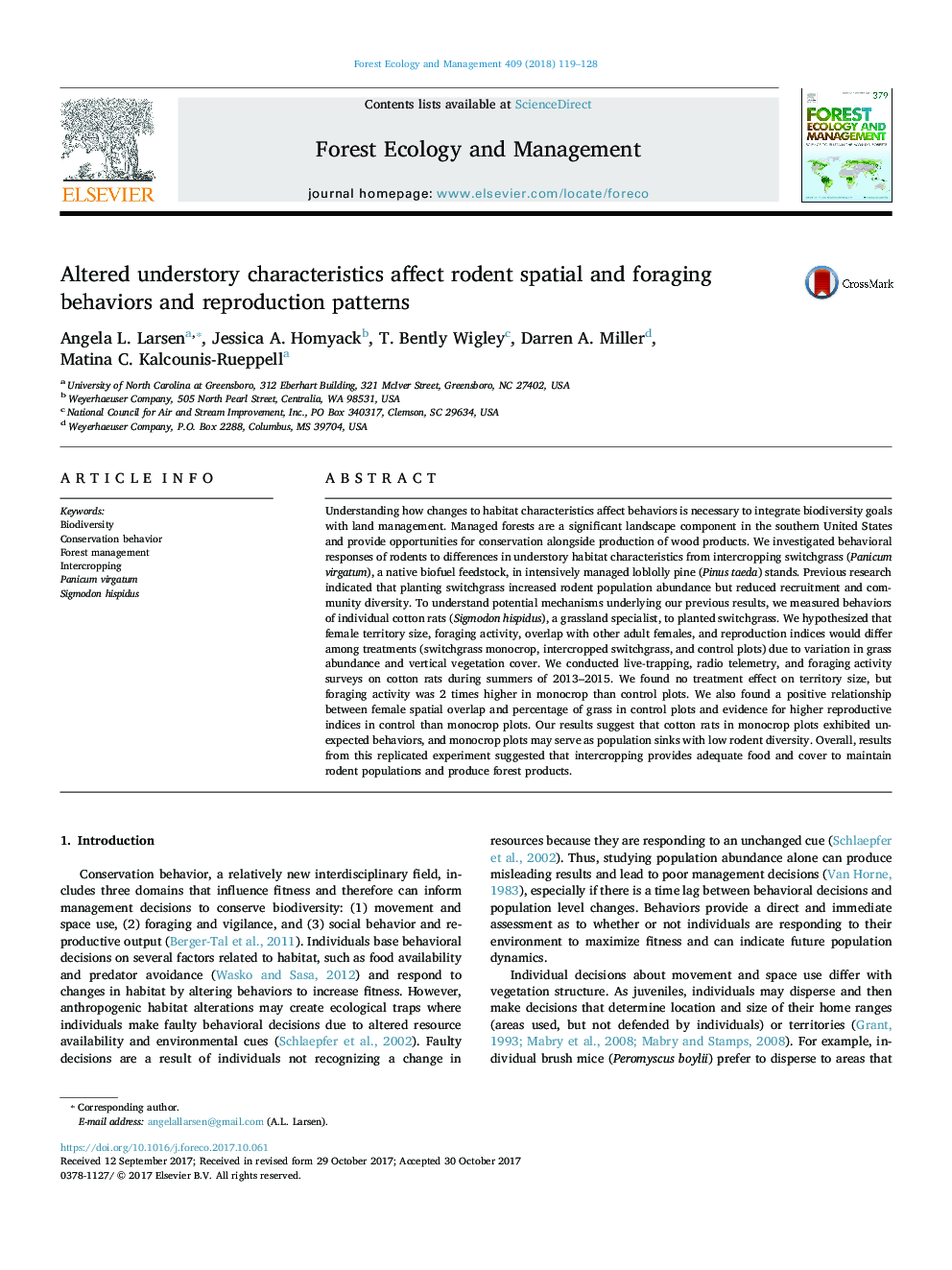| Article ID | Journal | Published Year | Pages | File Type |
|---|---|---|---|---|
| 6541876 | Forest Ecology and Management | 2018 | 10 Pages |
Abstract
Understanding how changes to habitat characteristics affect behaviors is necessary to integrate biodiversity goals with land management. Managed forests are a significant landscape component in the southern United States and provide opportunities for conservation alongside production of wood products. We investigated behavioral responses of rodents to differences in understory habitat characteristics from intercropping switchgrass (Panicum virgatum), a native biofuel feedstock, in intensively managed loblolly pine (Pinus taeda) stands. Previous research indicated that planting switchgrass increased rodent population abundance but reduced recruitment and community diversity. To understand potential mechanisms underlying our previous results, we measured behaviors of individual cotton rats (Sigmodon hispidus), a grassland specialist, to planted switchgrass. We hypothesized that female territory size, foraging activity, overlap with other adult females, and reproduction indices would differ among treatments (switchgrass monocrop, intercropped switchgrass, and control plots) due to variation in grass abundance and vertical vegetation cover. We conducted live-trapping, radio telemetry, and foraging activity surveys on cotton rats during summers of 2013-2015. We found no treatment effect on territory size, but foraging activity was 2 times higher in monocrop than control plots. We also found a positive relationship between female spatial overlap and percentage of grass in control plots and evidence for higher reproductive indices in control than monocrop plots. Our results suggest that cotton rats in monocrop plots exhibited unexpected behaviors, and monocrop plots may serve as population sinks with low rodent diversity. Overall, results from this replicated experiment suggested that intercropping provides adequate food and cover to maintain rodent populations and produce forest products.
Keywords
Related Topics
Life Sciences
Agricultural and Biological Sciences
Ecology, Evolution, Behavior and Systematics
Authors
Angela L. Larsen, Jessica A. Homyack, T. Bently Wigley, Darren A. Miller, Matina C. Kalcounis-Rueppell,
